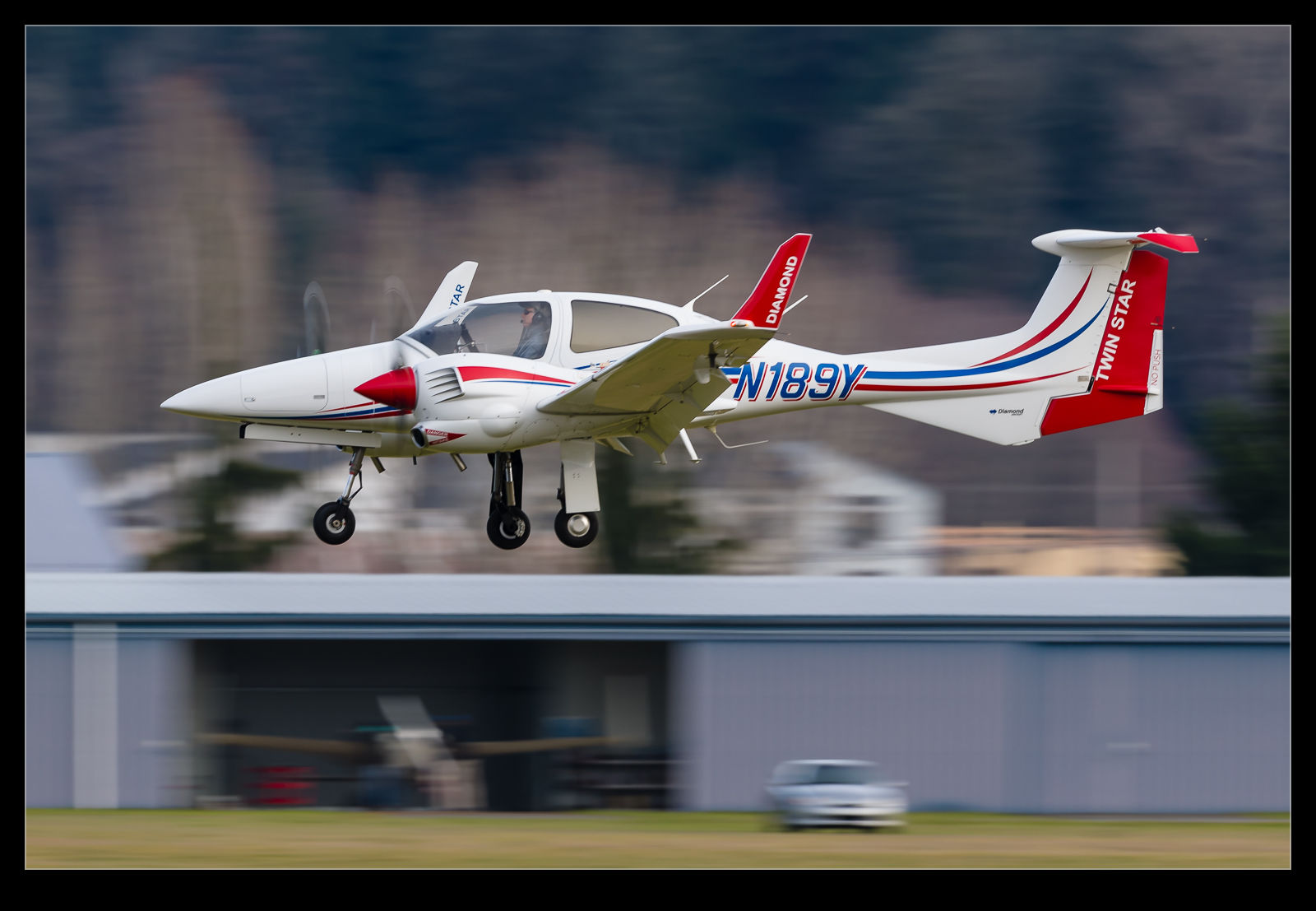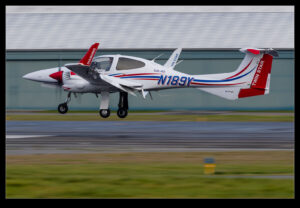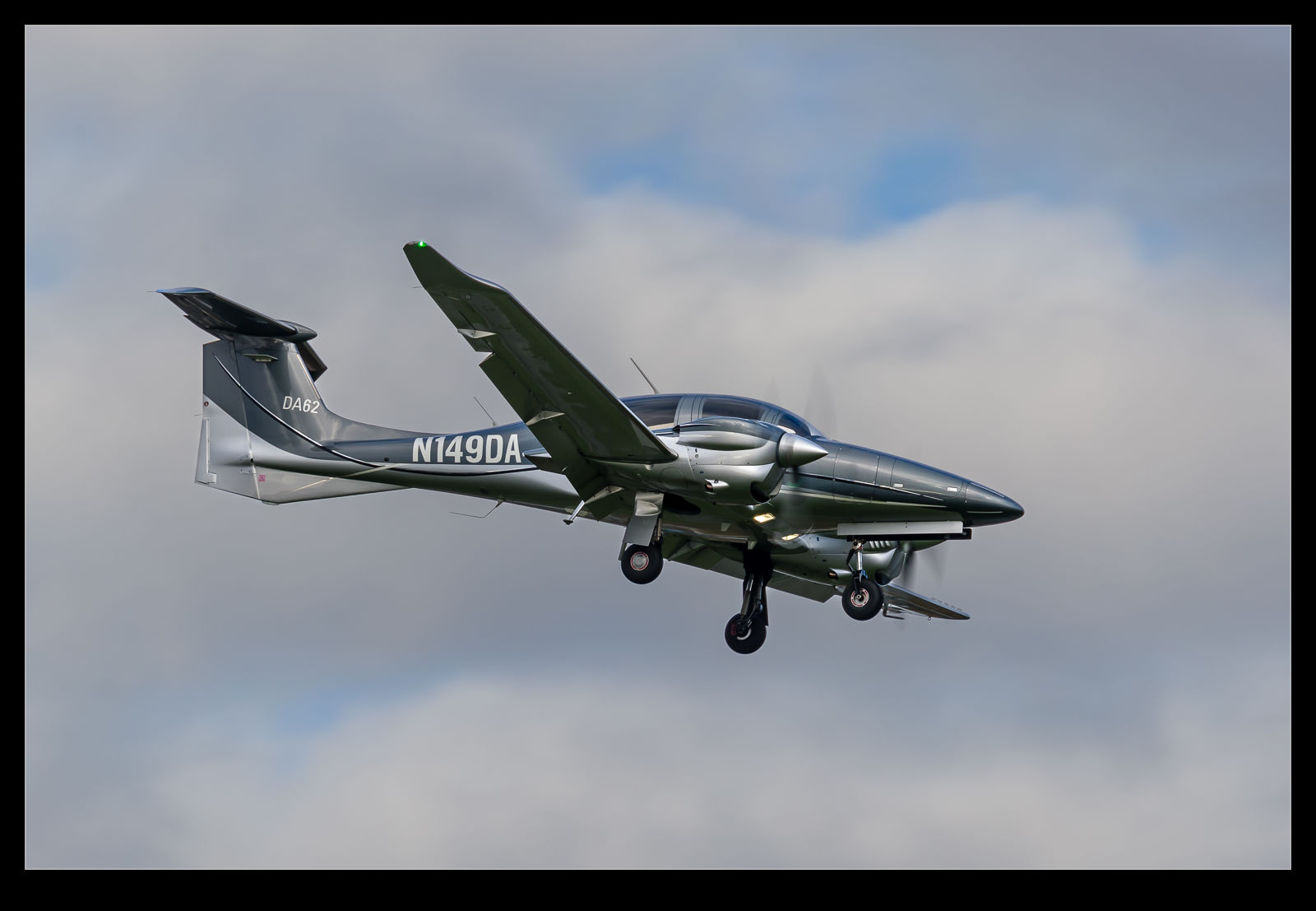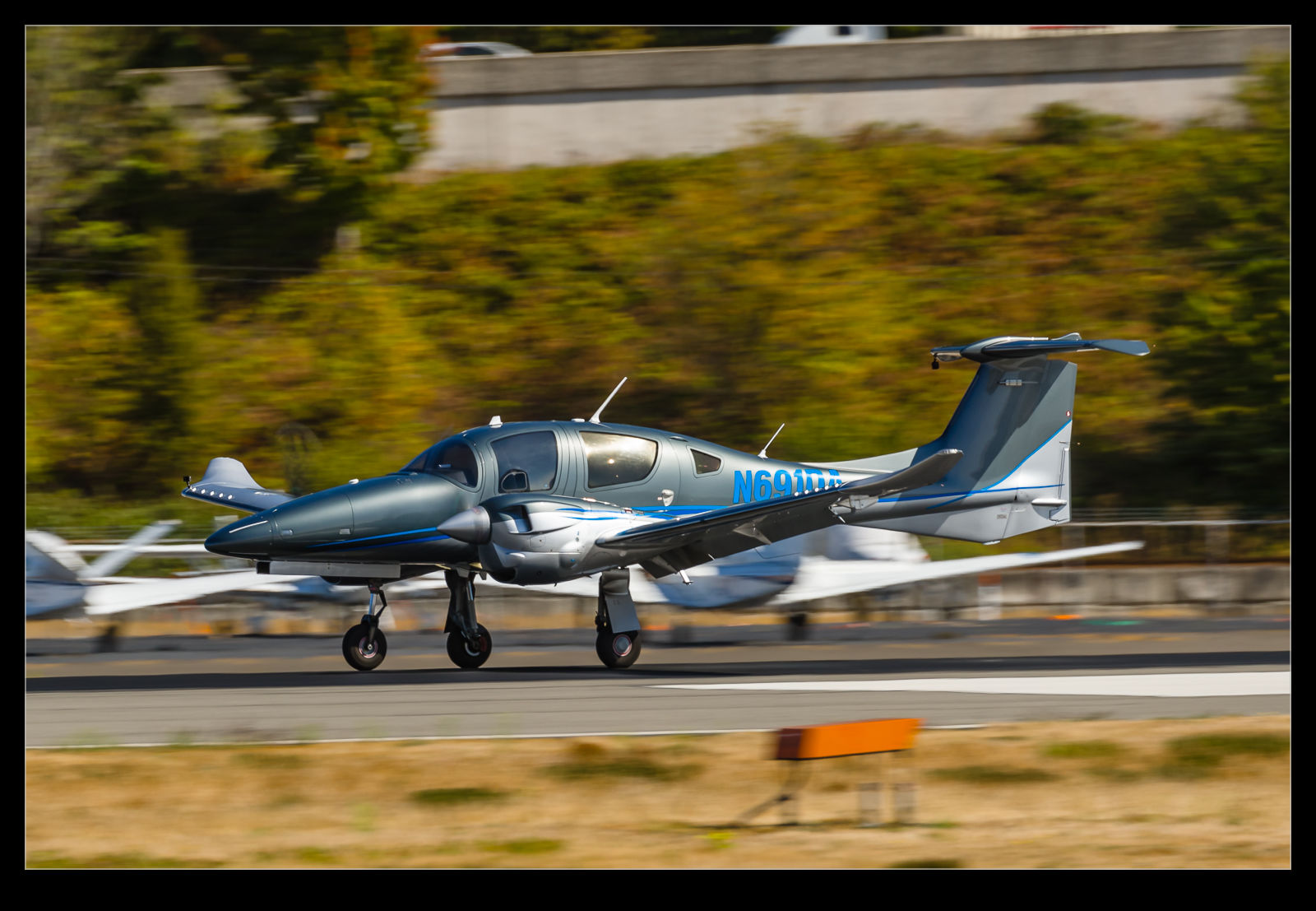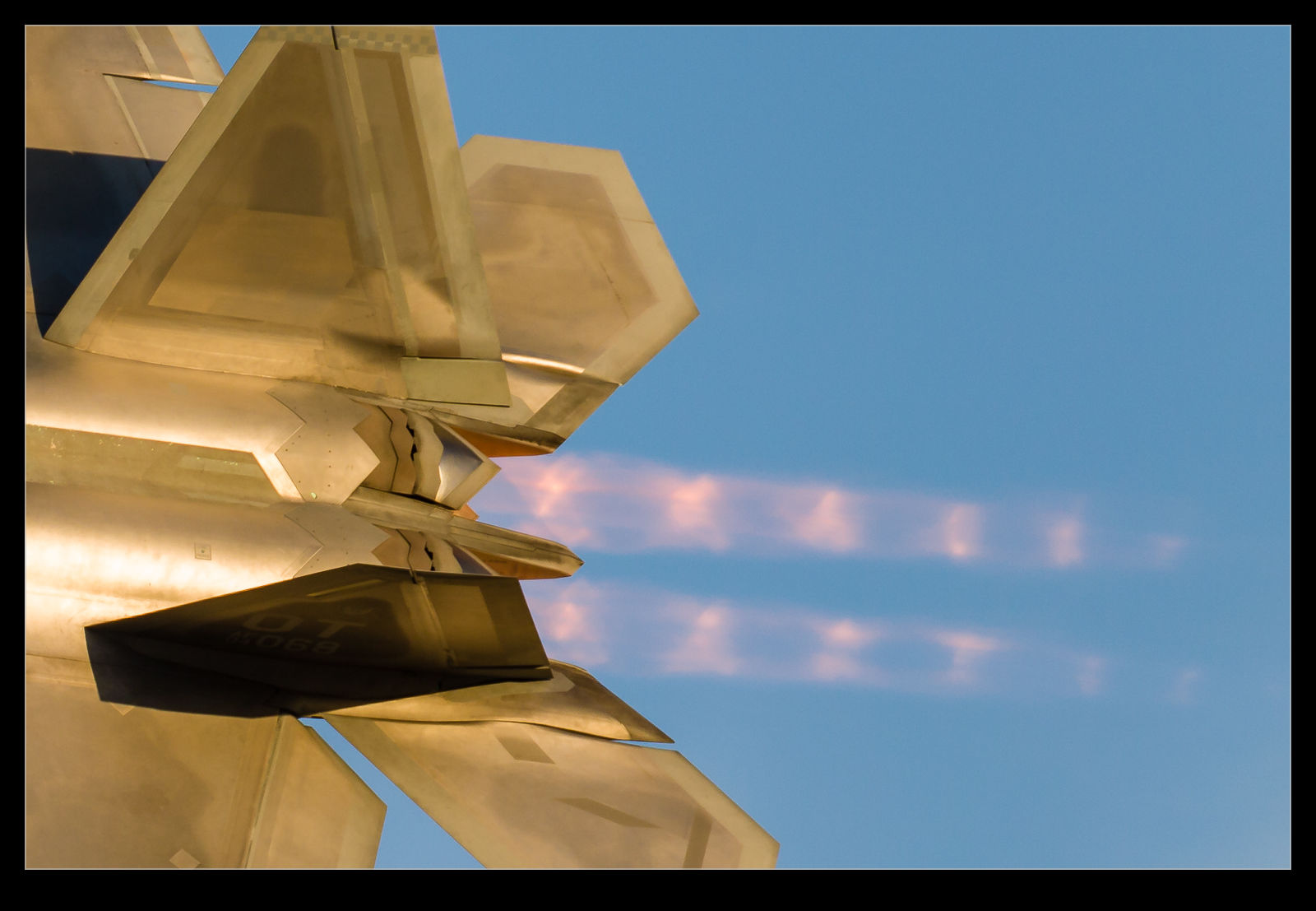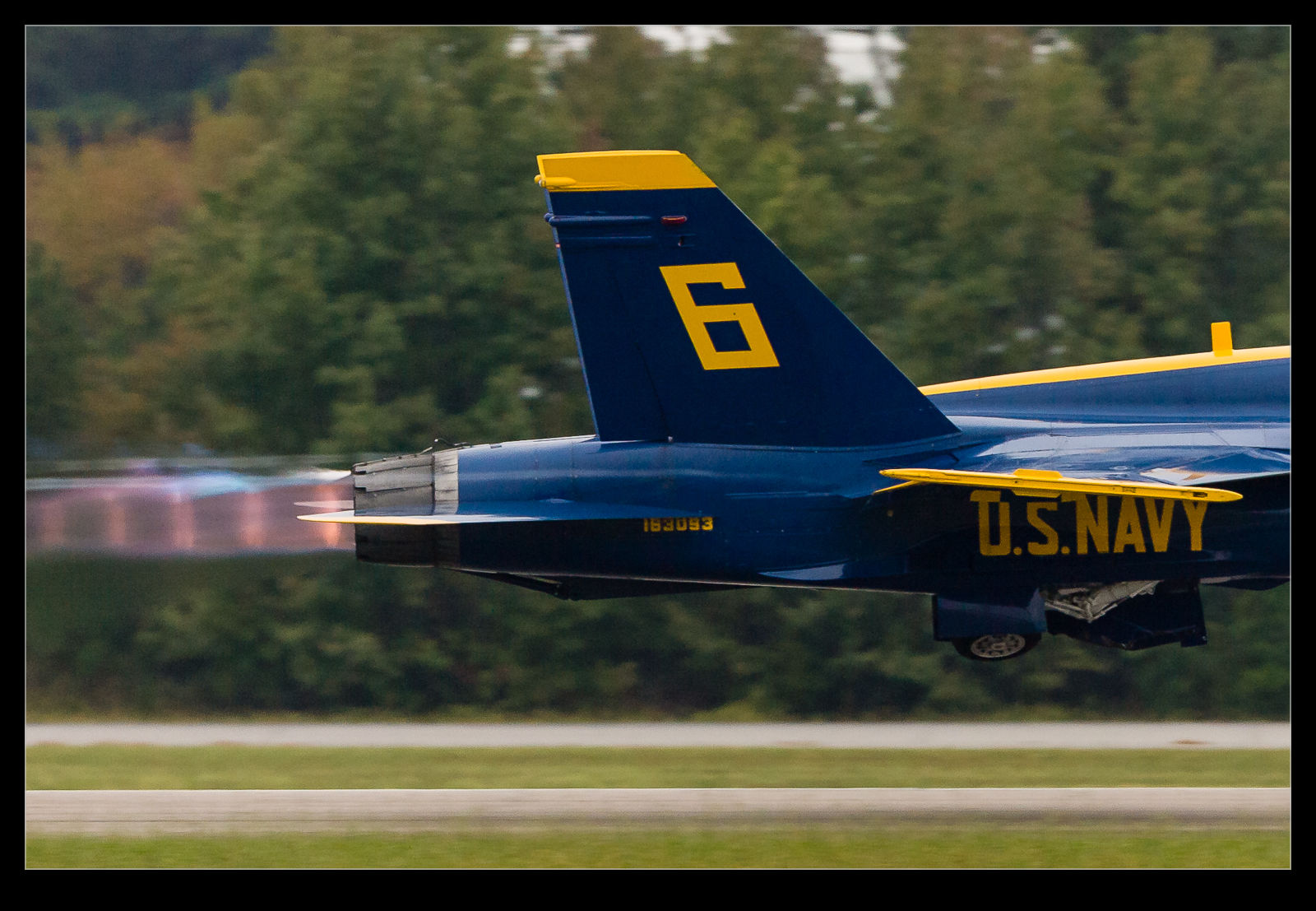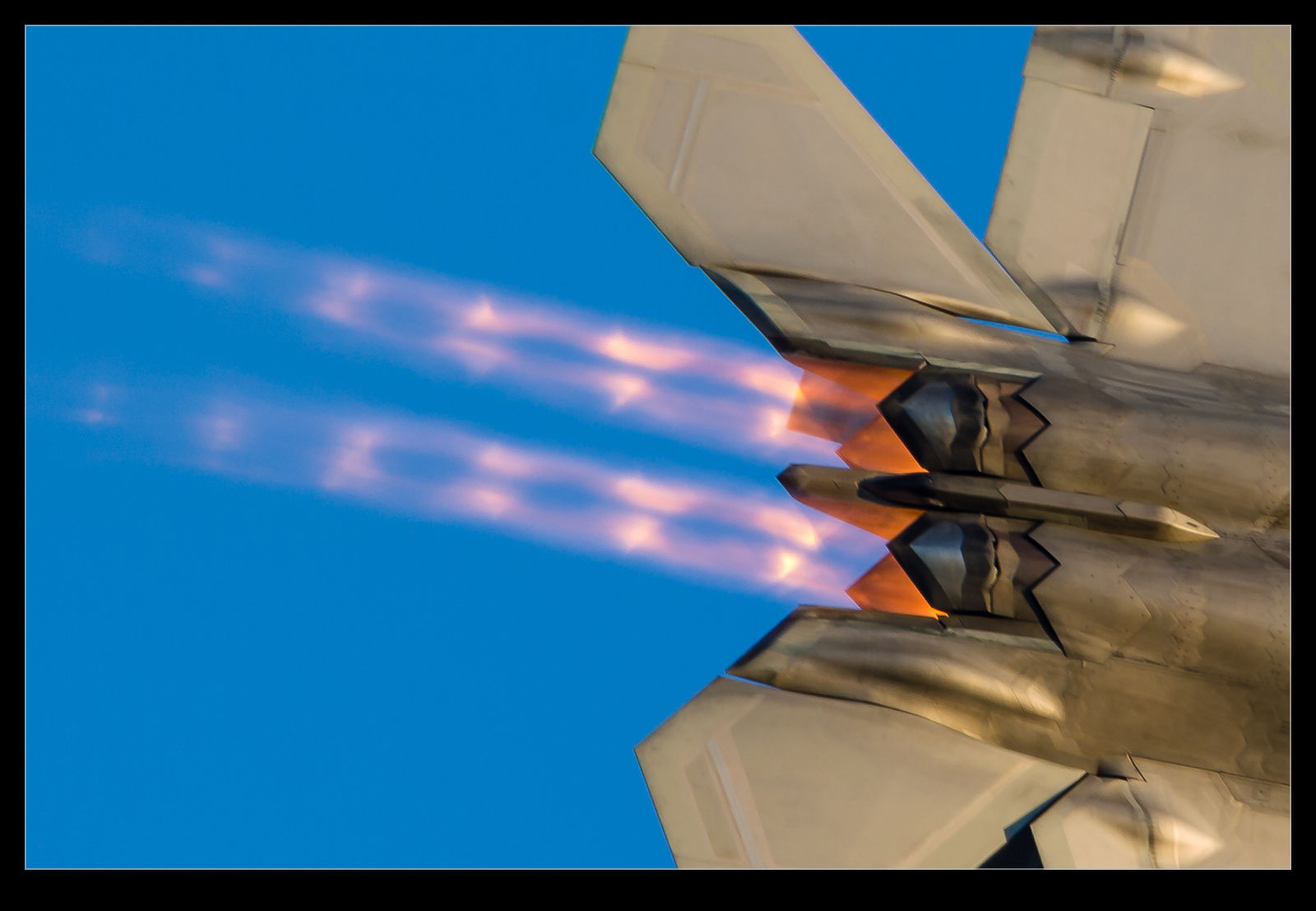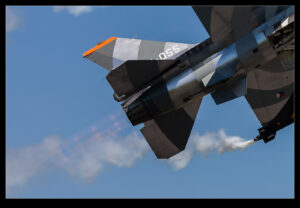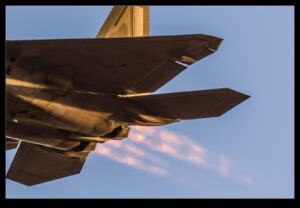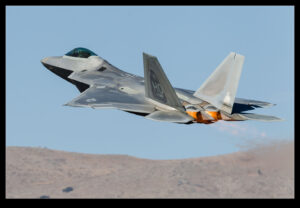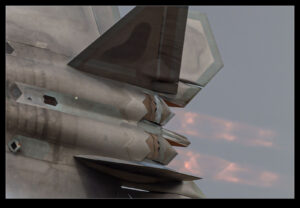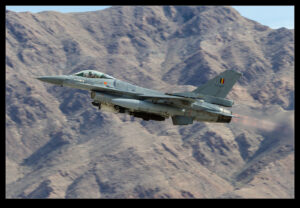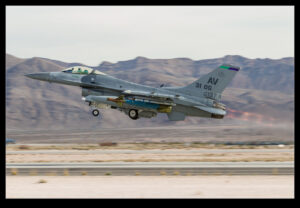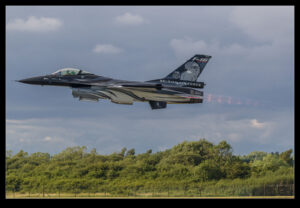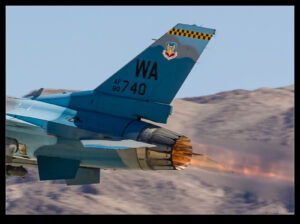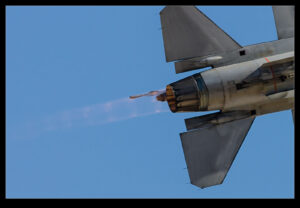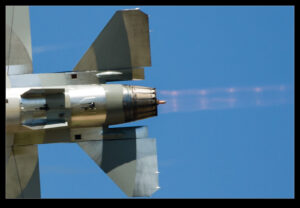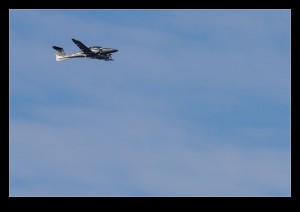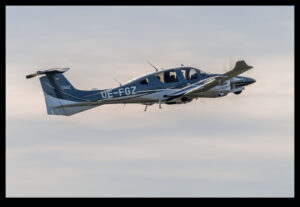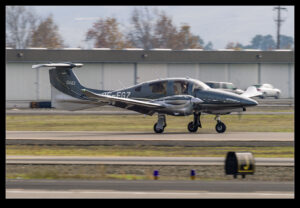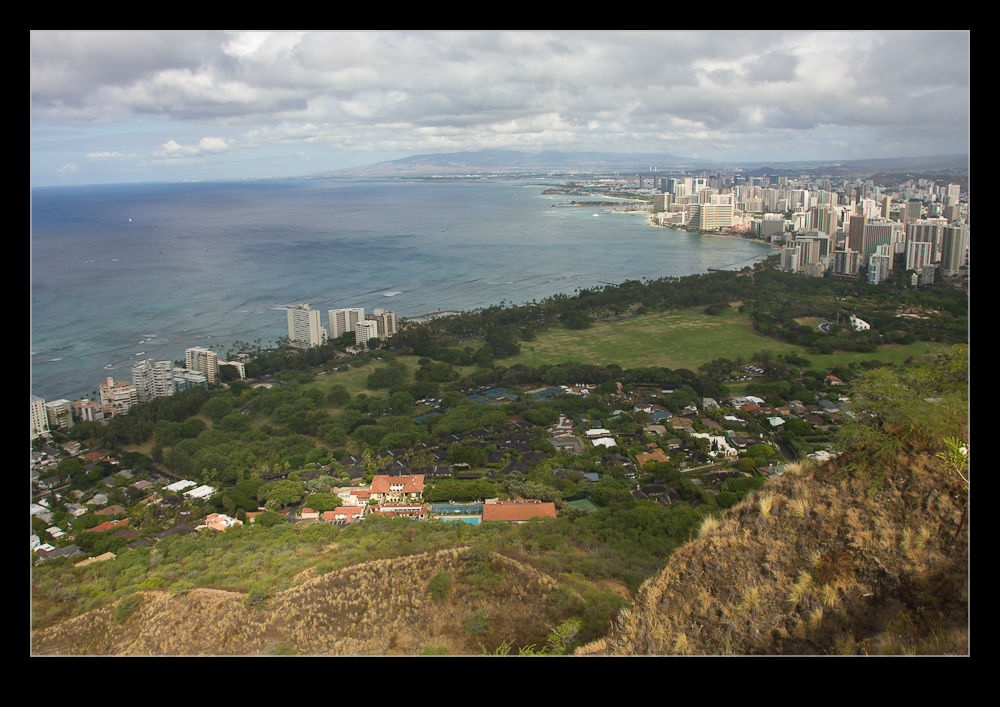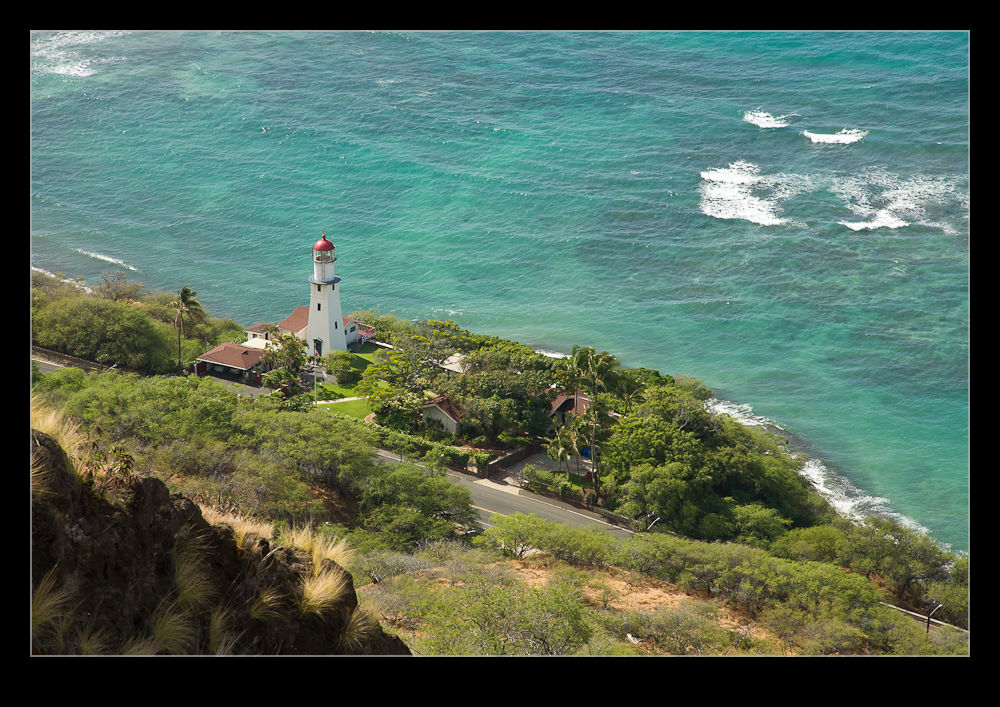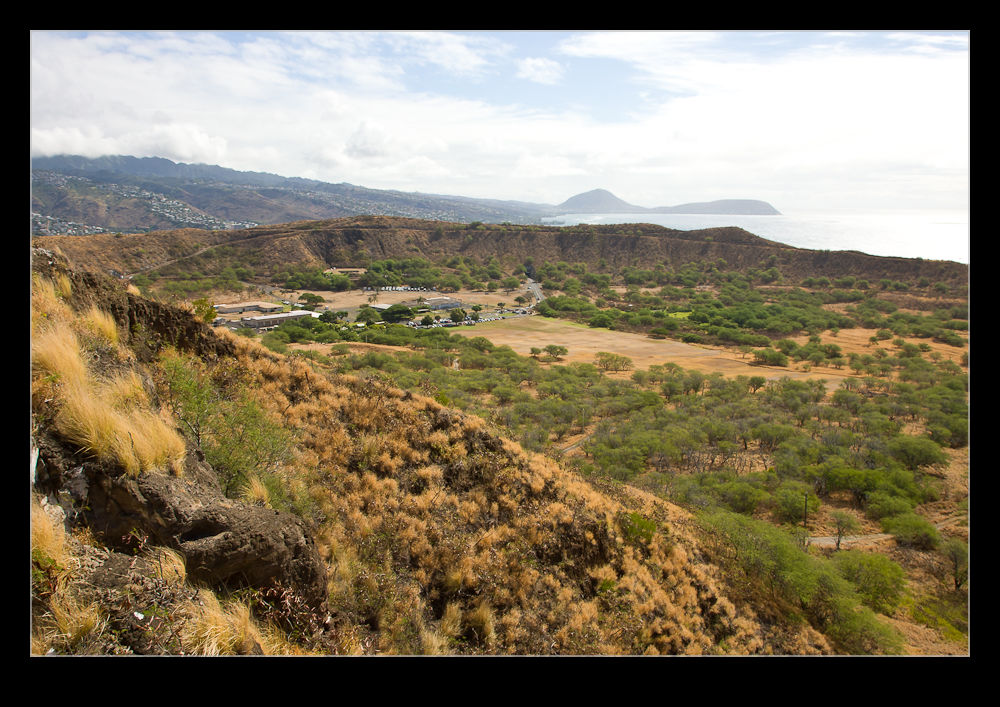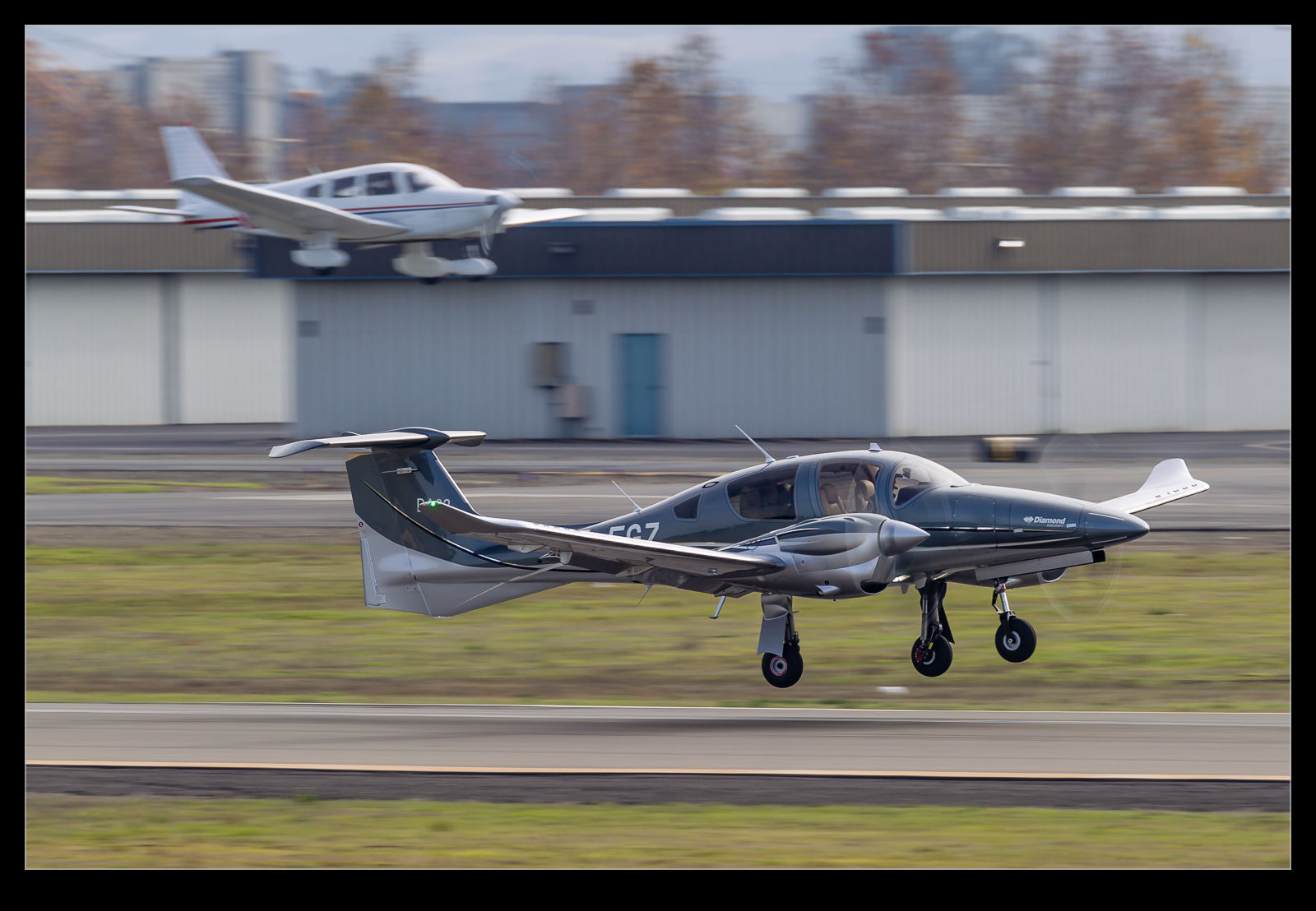 I was actually looking for something else when I headed to Livermore. An interesting aircraft had come to the field from Denver and a friend had given me a heads up about it. I went over to see if I could see it. As it turned out, the tail was just visible in a hangar across the field but there was nothing much to see. I decided to hang around for a short while before heading home.
I was actually looking for something else when I headed to Livermore. An interesting aircraft had come to the field from Denver and a friend had given me a heads up about it. I went over to see if I could see it. As it turned out, the tail was just visible in a hangar across the field but there was nothing much to see. I decided to hang around for a short while before heading home.
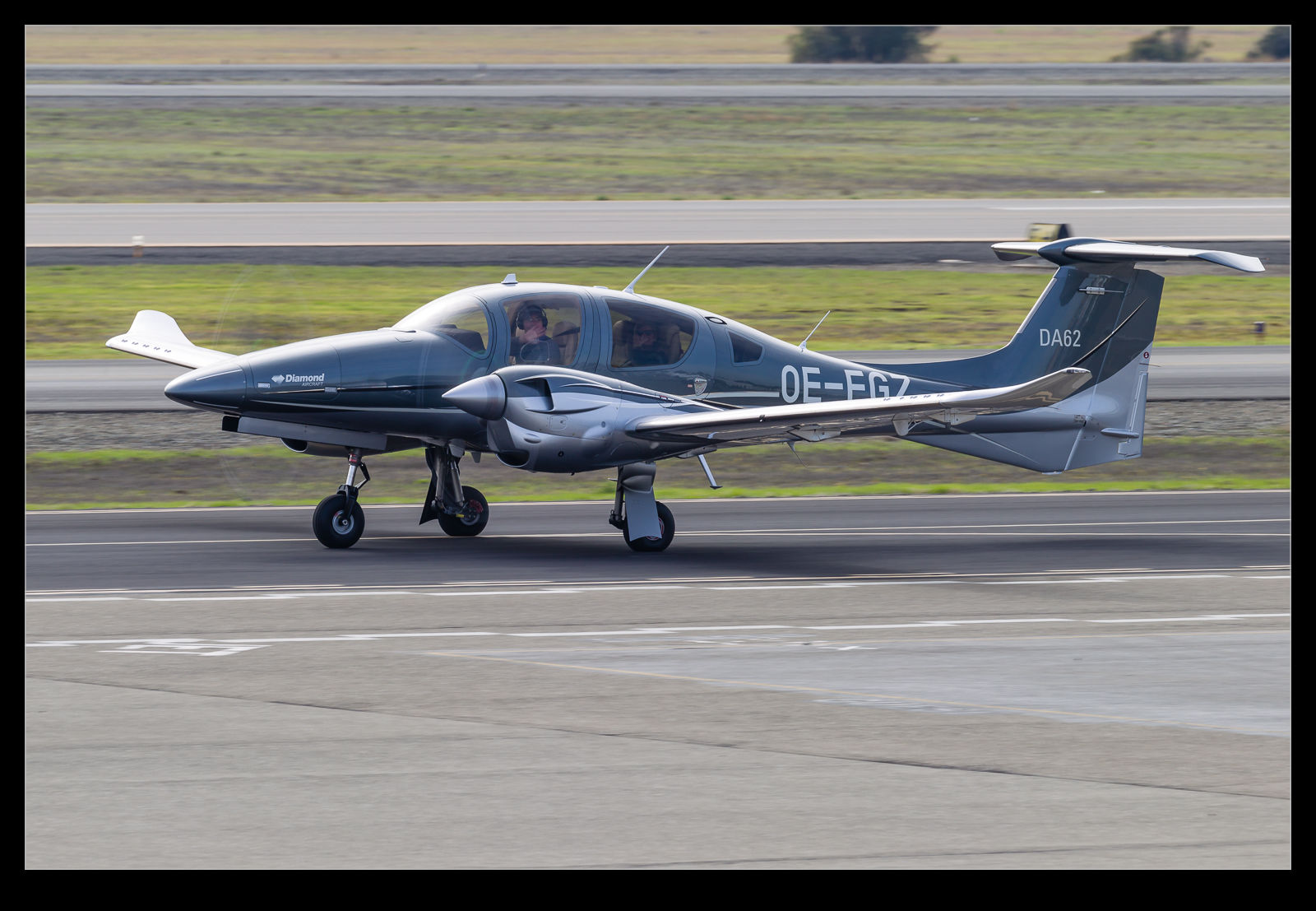 As I was wandering along the fence line, a light twin came in to land. I got some shots as it landed and could read the DA62 logo on the aircraft. This is Diamond’s newest product and this appears to be the first example to show up in the US. I had just been reading the flight test on it in Flight International. It turns out the wife of the pilot was standing nearby. They were due to head off but we chatted for a while about their training operations and now the role of distributor for the type.
As I was wandering along the fence line, a light twin came in to land. I got some shots as it landed and could read the DA62 logo on the aircraft. This is Diamond’s newest product and this appears to be the first example to show up in the US. I had just been reading the flight test on it in Flight International. It turns out the wife of the pilot was standing nearby. They were due to head off but we chatted for a while about their training operations and now the role of distributor for the type.
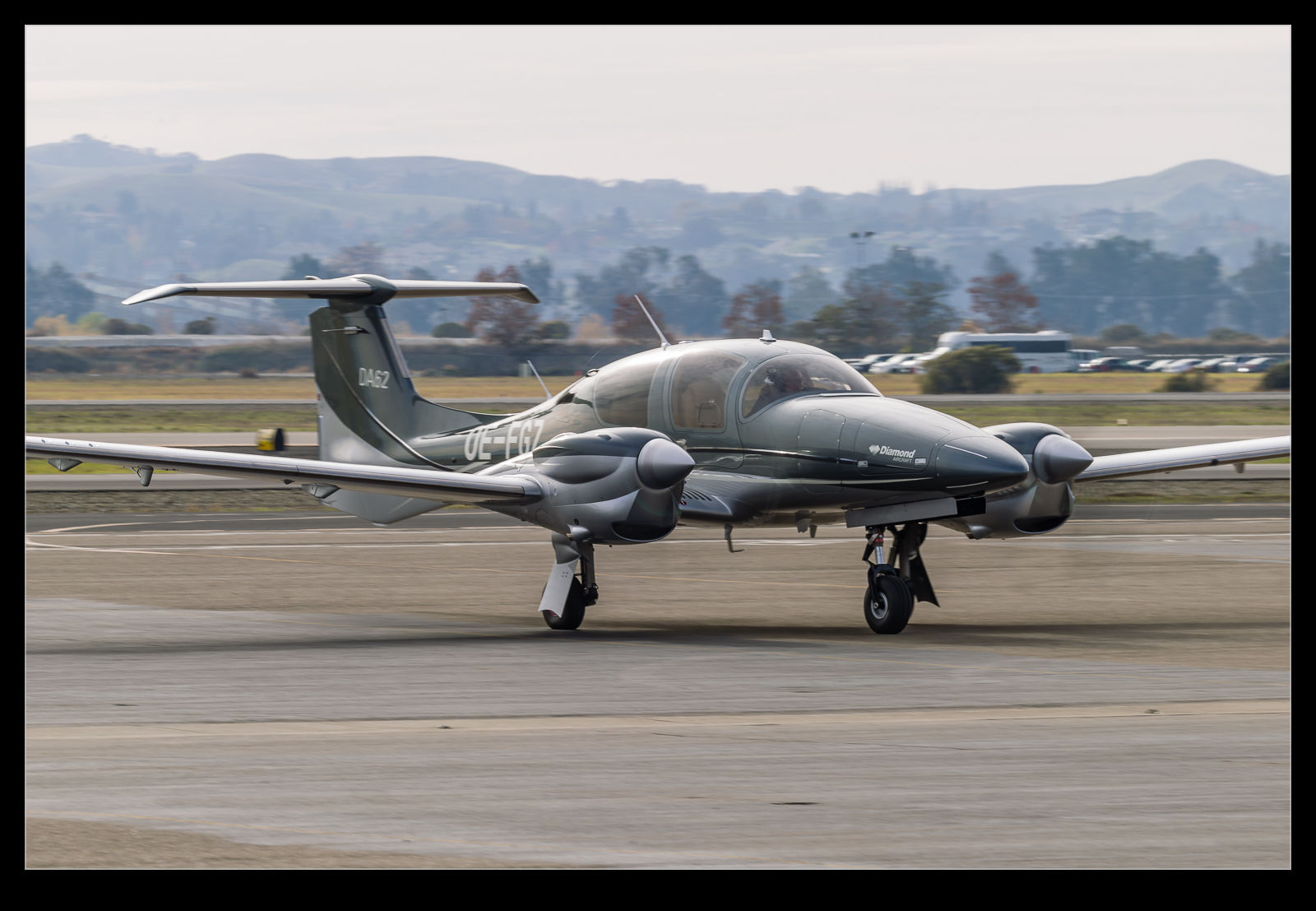 The DA62 has a change for Diamond in that it can be painted in colors. Previously, the airframes were white and all you could do was add stripes to customize them. They have done something new with the composites and this example was in a really nice metallic gray finish. They soon loaded up and headed out. This is a cool plane and a comfortable seven-seater. If you are in the market, give these guys a call!
The DA62 has a change for Diamond in that it can be painted in colors. Previously, the airframes were white and all you could do was add stripes to customize them. They have done something new with the composites and this example was in a really nice metallic gray finish. They soon loaded up and headed out. This is a cool plane and a comfortable seven-seater. If you are in the market, give these guys a call!
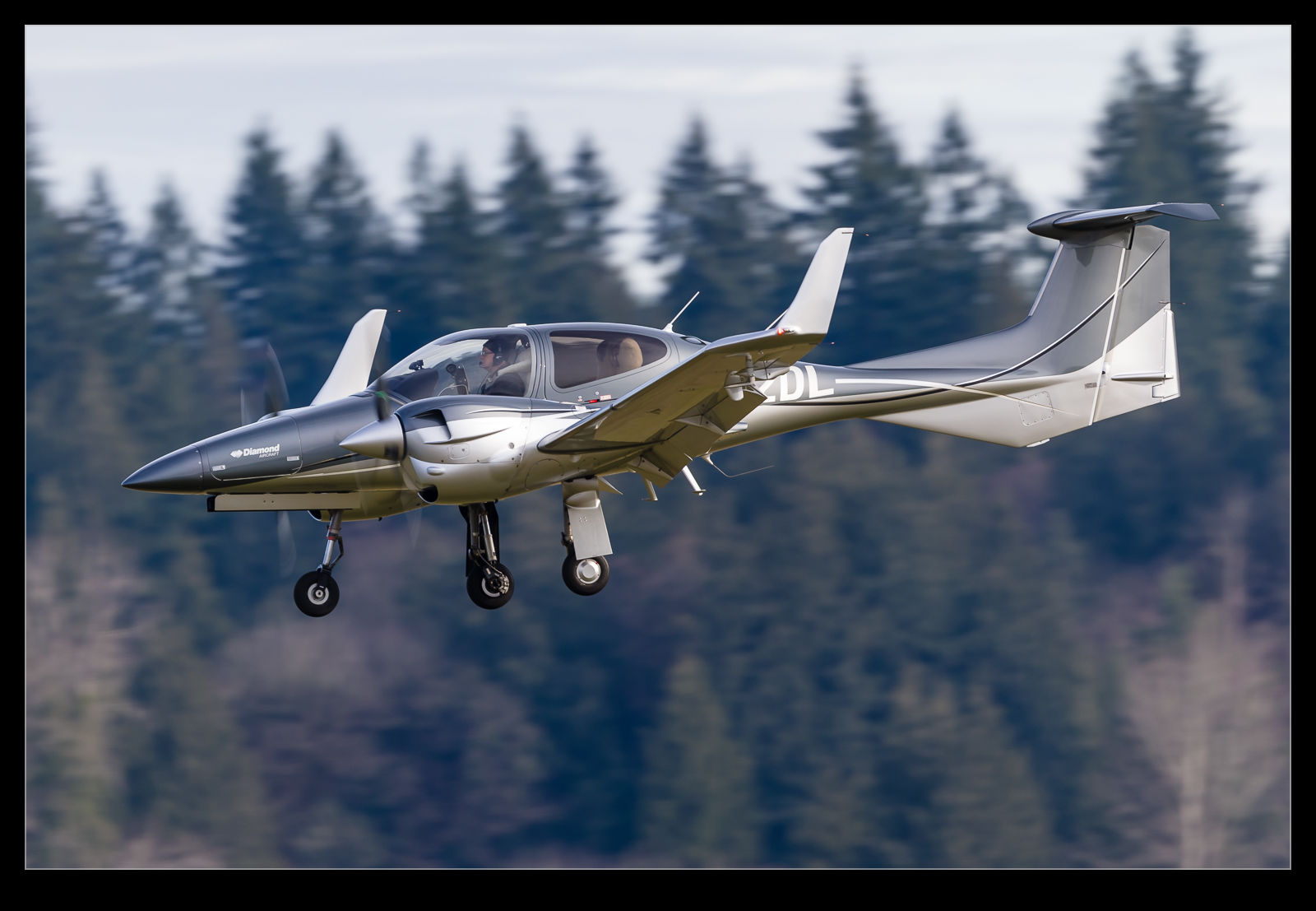 Arlington had a couple of different visitors. They were both TwinStars and they arrived within a few minutes of each other. The first TwinStar showed up and I got some shots. When I saw a TwinStar on the approach, I assumed it was the same aircraft back around again. I figured I would drop the shuttle speed down a bit to vary things. Consequently, I was a bit annoyed when I realized the airframe in the viewfinder was a different one. I had to cross my fingers that I hadn’t blown it by going with the low shutter speed. Fortunately, a few of the shots were okay. Phew…
Arlington had a couple of different visitors. They were both TwinStars and they arrived within a few minutes of each other. The first TwinStar showed up and I got some shots. When I saw a TwinStar on the approach, I assumed it was the same aircraft back around again. I figured I would drop the shuttle speed down a bit to vary things. Consequently, I was a bit annoyed when I realized the airframe in the viewfinder was a different one. I had to cross my fingers that I hadn’t blown it by going with the low shutter speed. Fortunately, a few of the shots were okay. Phew…